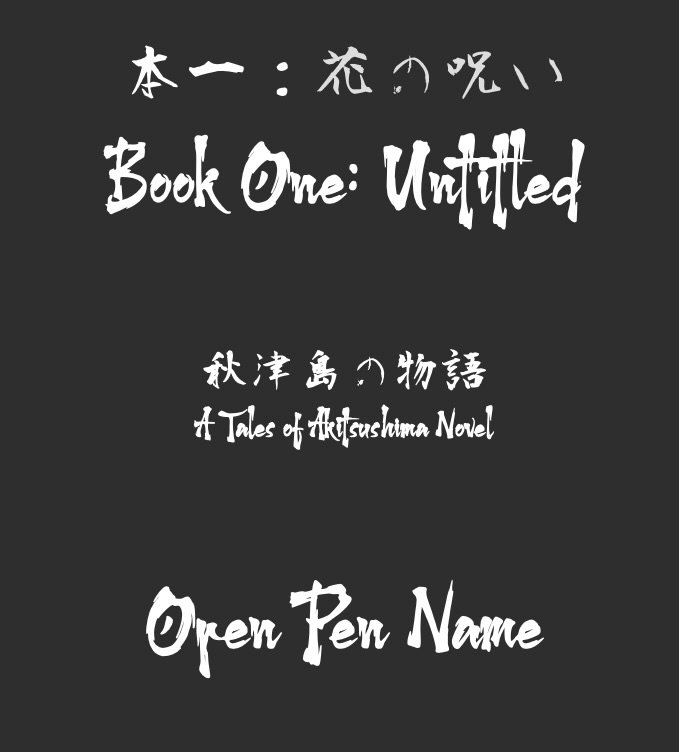Researching ‘Akitsushima no Monogatari’ 『秋津島物語』
(Yes, that Japanese title is just a placeholder for now..)
One of the things I’ve been wanting to do since reading The Tales of the Otori by Lian Hearn, was to write my own secondary world series but rather than focusing on history or culture, I wanted to focus more on the supernatural side.
Japanese mythology (I recommend this book by Joshua Frydman) is utterly fascinating and this is a nice modern take on dealing with complex naming concepts, as well as different kinds of kami*, spirits, legendary beings and the point where myth and real history collide. I particularly like how each book in this series is colour-coded and printed in black, white and whatever colour has been chosen (so this book is navy, while the Egyptian myth one is teal and the up-coming Chinese title is sorta aquamarine).
※ As a scholar, I use kami (神) as you would any other religious term adopted into English. It does not need translating or defining for English ears… Kami are kami…
A few years ago Deadname Me wrote an awful novel for a terrible shared universe which died a quick and unpleasant death. But the bones were there and so I took them, smashed them up and then remade them into something I’m calling Akitsushima no Monogatari (Tales of the Dragonfly Islands). This is an old but legit term for Japan and seems perfect for my take on a much more supernatural world.
This is a free image provided by Squarespace.
The protagonist of my series is a cursed kitsune named Izumi who is sent to find out who has kidnapped the daughter of the Empress Himiko (this is a regnal name within the world) and, while on a pilgrimage to seek the knowledge of a syncretic deity (The Kindly Goddess) who came from beyond their shores, Izumi meets a human miko named Arashi Hana who is trying to find out what ails her mother, Eriko. Eriko has a magical tattoo of a bamboo forest which is slowly taking over her body and overwriting her personality with something… sacred and afraid. Both women are seeking the knowledge to save their world and everything, as musubi, is connected.
But knowledge comes at a price…
I’m not sure how long this series will be, but for now, I am busy world-building in Notion. I have the storyline for book one basically outlined though and I’m thinking it’ll be a trilogy for now… Three is a good number. No, I don’t have a playlist yet but there will be one, eventually.
I must have been twelve or so when I first came across Across the Nightingale Floor and first encountered Japan, as veiled by the Hidden, the Tribe and modelled on Japan around the time of the Black Ships. Though, honestly, between you and I, my favourite book is actually the prequel Heaven’s Net is Wide. Her books are also how I heard about the folklorist Lafcadio Hearn (aka Koizumi Yakumo), from whom she took inspiration for her pen name, and her blog was my first look at how worldbuilding works.
As interested as I am in the Shimabara Rebellion (shameless plug for Jonathan’s excellent book), in the kakure kurishitian, it is the magic and mythology of Japan which catches my attention. I ADORE Lian Hearn’s series, and being able to connect with her (Gillian Rubinstein) via social networking is amazing… The future is really surreal for someone born in the eighties… I might dabble in history, but religion, myth and everything in between is where my passions lie. Especially when it comes to everything that isn’t Abrahamic in nature, which we were practically force-fed growing up. But Japan is the land of eight million kami and has fascinated me for three decades at this point. Hell, I’m doing my MA in the subject and probably, under a different star, should have been a folklorist or a priestess but, instead, I adapt manga, write stuff and study.
So a properly magical second world… Gotcha!
One of the things I learned (from playing Ōkami, funnily enough) was the power of liminal spaces and how torii are gateways between the mortal and divine worlds. I’ve walked through hundreds at this point (and not just at Fushimi Inari Taisha either) and it always feels special, bowing respectfully to the enshrined kami and stepping from the human world to somewhere sacred and more natural to me than any church or temple.
This is a free image provided by Squarespace.
So the plan is to write something epic, something fantastical, whilst also leaning into the lesser-known aspects of Japanese storytelling. Japanese novels are not like Western ones (and this might actually make me want to take my Japanese Lit module in September; if I angle it as research and not as my own personal hell, I might actually surprise my tutor with my enthusiasm!) As a blind reader and an autistic person, I need to be motivated to do stuff, I need to want to do it but the idea of reading so much is quite overwhelming…
This might be a good time to finally start reading Yumemakura Baku’s Onmyōji series. Or, at least, the manga. Or the other manga.
Yes, I’ve seen the movies and the Chinese adaption… before it was cool.
I have about two months before I’m back at the UEA and my tutor did tell me to chill out. Good job worldbuilding is my favourite hobby, as is diving down rabbit holes about foreign magical systems. Excellent plan, Asha! Never let me complain about being bored!
Anyway, that’s all for now. I still have other things to blog about but yes, this is how I’m spending my summer.



